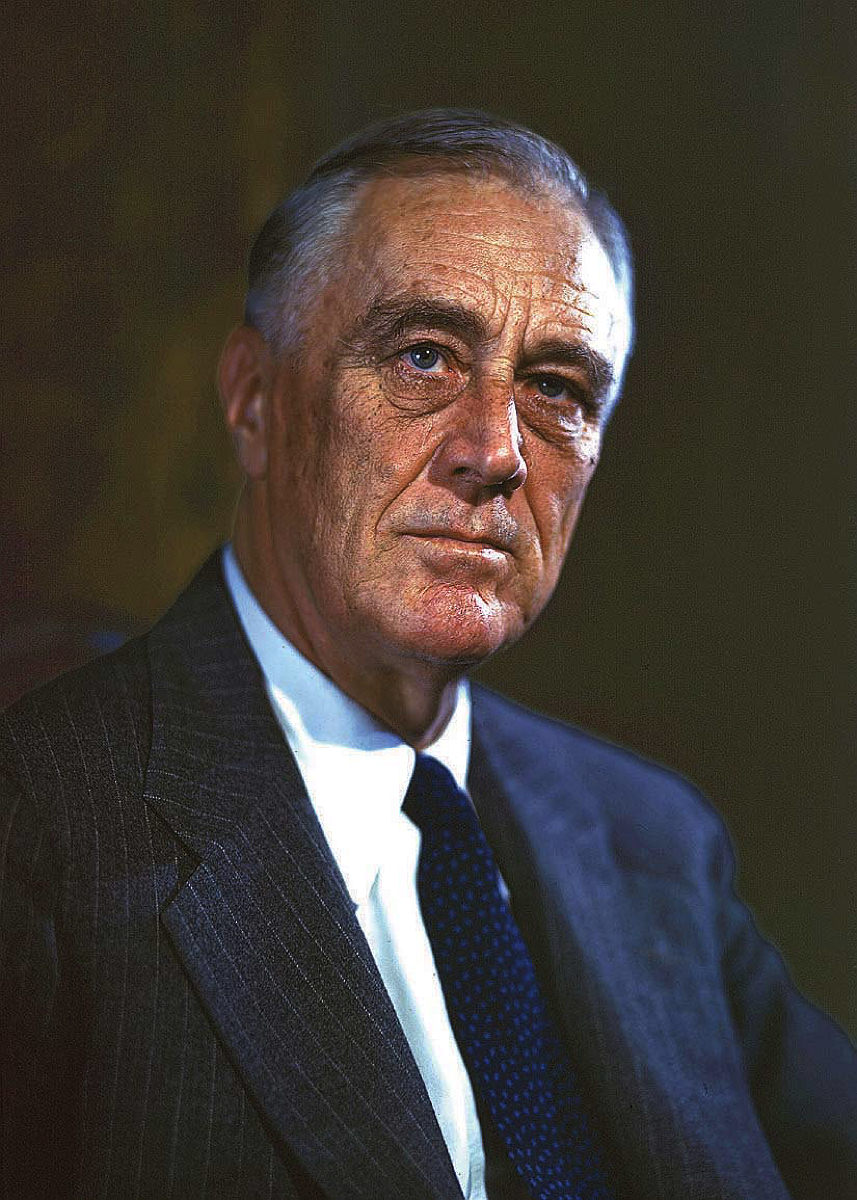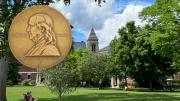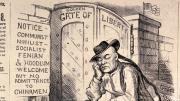Who are the protagonists of The Project-State and Its Rivals: A New History of the Twentieth and Twenty-First Centuries, Saltonstall research professor of history Charles Maier’s new history of the twentieth and twenty-first centuries? They are networks: networks of cosmopolitan individuals seeking to make the world a better place through better governance, of people hoping to become rich through entrepreneurship and the funding of enterprise, of the officials of states and government who see themselves not as mere administrations but on a mission and with a mandate to change history, and of people controlling powers based on seizing and exploiting natural resources.
These are very different from the standard protagonists of history books, who are almost always some combination of politicians and ideologues, democracies and autocracies, social movements and classes, or (sometimes) cultural-psychological shifts. With new protagonists comes a new set of stories to make different sense of events with which we thought we were very familiar.
Does it work? I strongly and firmly believe that it does. It is a very refreshing take on a history I thought I knew well—especially because I had just published my own big book on the world during the same era, Slouching Towards Utopia: The Economic History of the Twentieth Century (see the review, “Where We Went Wrong,” November-December 2022, page 58). I wish I had had The Project-State and Its Rivals at my elbow when I was undertaking my final revisions.
The original resource empires fell during the age of decolonization. Their lengthy fall directly shaped history for the first two generations of the period covered by Maier’s history; they left international legacies of racial and economic inequality that still cannot be ignored. And while OPEC was not exactly a resource empire, its stranglehold over world oil supply at key moments disrupted the goals of project-states and others.Before World War I, do-gooders appealing to science and ethics were scarce on the ground. The effort at the Hague to bind war’s cruelty by rules was one of a few such efforts. The overthrow of the personal rule of Belgian King Leopold in Congo (“Listen to the yell of Leopold’s Ghost/Burning in Hell for his hand-maimed host./Hear how the demons chuckle and yell,/Cutting his hands off, down in Hell”) was another.
Perhaps the late-1800s socialist movement called the “Second International” was a third. They earnestly informed one and all of their goal, and indeed of the inevitability of their cause. They claimed that— just as the feudal economy had taught hierarchy and honor, and the commercial-society economy had taught individualism, property, and representation—so the steam-power economy was teaching solidarity and the value of human cooperation. It would, they said, soon be obvious to all in the engine- and machine-powered age that we should all wear identical blue overalls, call one another “comrade,” and rotate through the jobs administering things in our free and equal society of associated producers. The arc of history tended toward socialist justice.
There we have three.
But such movements claiming the authority of the arc of history toward their justice exploded in number and influence in the years after World War I and continue to grow to this day. They are confident that their moral virtue and technocratic expertise are trumps. To the idea of politics-as-struggle (often military), political-economy-as-trade, and politics-as-rule-of-law has been added the idea of governance-by-appeal: appeal to the moral sense and to disinterested experts.
This arrival of technocracy and morality as active political forces in themselves has been the aspect of our civilization that observers from other times might find most strange. They would probably be surprised at the many striking and substantial successes it has had—in the Mediterranean classical tradition, after all, Plato made a hash of his trips to advise the rulers of Syracuse, Aristotle failed to teach Alexander III, “the Great” Argeadai of Macedon, to be a philosophical king, and Seneca did even worse with Emperor Nero.
However, do-good social movements and empires profiting from resource control have been little more than footnotes compared to the main driving force of history since World War I—what Maier calls “the web of capital”: every individual in the world seeking wealth and income for themselves. Governments seeking economic prosperity to maintain support and power internally. Governments seeking economic prosperity for defense and attack externally. All these strained to accommodate what they saw as the interests of capital. All feared that, in a globalized economy, the worst outcome was not to be exploited but to be ignored by the capitalists. Maier tells these stories very well.
But capital has not been all-powerful, not by a large margin. Consider Maier’s category of the “Project-State”: World War I demonstrated how powerful the state could be, how much it could accomplish. It also showed that there were only small differences between how states that sell each other as opposites ordered people around when the chips were truly down. The web of capital could be chivied by law and regulation and made to sing in harmony with the government during war. What would not be possible if the state extended its reach even during peace?
Vladimir Lenin was probably the most naïve in his belief that the Soviet Union could be run indefinitely and prosperously as if it were the German war economy of 1914-1918. But many others drew from World War I the lesson that the state could be used to construct “a land fit for heroes.” And the state could mold not just institutions and incentives but cultures, psychology, and desires. “Why socialize industries?” Adolf Hitler is supposed to have said. “We socialize human beings!”
The first-generation project-states were those that tried above all to remake their own societies. In the years after World War I, the project-states—in addition to Russia, such countries as China, Turkey, and Mexico—sought to shatter rural hierarchies and clientelist politics to join the modern world. The second generation was led by the United States as remade by Franklin Delano Roosevelt. His creation, what historian Gary Gerstle calls “The New Deal Order,” and what most call “social democracy,” became the way of organizing an effectively democratic and liberal market economy for social welfare.

Franklin Delano Roosevelt’s New Deal social democracy became the way of organizing a liberal market economy for social welfare.Photograph by Leon A. Perskie/FDR Presidential Library & Museum/wikipedia
But the forms of technology and production were shifting the ground under the feet of the project-states’ networks. The web of capital had moved from its steam-power into a second-industrial-revolution configuration of chemical engineering/internal combustion/electricity/telecom modes. And then it moved into a phase of “Fordist” mass production that provided great support for the New Deal Order.
But then the shift from the mass-production to the global value-chain economy began. The New Deal Order did not outlast the 1970s. The next generation of project-states constructed the Neoliberal Order, for both Reagan and Thatcher along with their ruling coalitions believed that “there was considerable scope for applying the neo-liberal cleansing agent to the encrusted hull of many a good ship ‘mixed economy’ with beneficial results,” in the words of British communist historian Eric Hobsbawm. And Hobsbawm concurred in this judgment that “some of the ruthless shocks imposed... by Mrs. Thatcher had probably been necessary” as “even the British left was eventually to admit.”
Even left-wingers discontented with consumer capitalism and centrists fearing bureaucratization, rent-seeking, and “demosclerosis” applauded the partial dismantling of FDR’s New Deal Order. Thus by the 1990s, the leaders of opposition left parties generally put themselves forward publicly as cheerleaders for largely untethered capital, even if in private they thought of themselves as unrepentant New Deal wolves in left-neoliberal sheep’s clothing.
The succeeding Neoliberal Order failed to deliver on promises of reinvigorated economic growth and a restored moral center of society. What it did do was raise income inequality and create plutocracy. And it created a (justifiable) sense that establishment politicians were servants of élites in the form of capitalists and do-gooders—a Merchant Right and a Brahmin Left, in Thomas Piketty’s formulation—rather than leaders who listened to and understood the concerns of the people. Plutocracy and populism have turned out to be the nemesis to the hubris of neoliberalism.
I have a different analysis and understanding than Maier with respect to the end-topics of the book: populism and plutocracy. This is as one should expect: history produces understanding but rarely prediction.
John Maynard Keynes thought that plutocracy would cease to be a problem when democratic governments that sought full employment applied his technocratic theories of economic management. A full-employment policy, he thought, would inevitably be a low-interest-rate policy. When interest rates were low, plutocrats had only two options: keep their wealth growing at a small rate by reinvesting all the interest, in which case the social power they normally exercised through their spending would be held in perpetual abeyance; or spend down their capital, in which case they would then cease to be plutocrats. This was, as Maier notes, Keynes’s “euthanasia of the rentier”—his prediction of the disappearance of dynastic wealth exercising dominion over society.
But Keynes was wrong: plutocracy returned. His first error was to overlook the fact that, even in his day, most plutocracy was not denominated as a capital sum in dollars or pounds, but rather in a claim to an income flow from monopoly, ownership of resources, or a well-capitalized enterprise. Of these, only the third would not see its capital value rise as interest rates declined. Keynesian low-interest rate policies would thus amplify plutocrats’ capital; with their incomes unchanged and their wealth magnified, the group’s power to shape society would, in fact, grow.
Keynes’s second error was that he could not foresee the large and persistent (right now it seems eternal) gap that would arise between the rate of interest on bonds and the earnings yield on stocks. For those willing to grab for risk, rates of profit have remained high on average even while rates of interest have become low. It is true that by taking outsized risks, each individual plutocrat has a large chance of crapping out—of losing so much of their wealth that they no longer can shape governance or directly wield much social power. But for the plutocracy as a whole, outsized risk-taking is very profitable: the winnings of the small group who are truly lucky vastly outweigh the losses of the unlucky, and so the social and political power exercised by plutocracy continues to rise.
The reflection of plutocracy turns into modern populism. With too much political voice in the hands of the super-rich, Maier suggests, politicians soft-pedal appeals to reforming the distribution of income. Political messages then become tuned either to enabling upward mobility by removing legacies of past injustice, on the left, or to the construction of a cross-class alliance based on the people vs. the strangers. As he writes:
“Contemporary populist ideas [are]...that there exist...two sorts of people...a virtuous, usually ethnically uniform core and a collection of ultimately parasitic hangers-on, whether intellectuals or immigrants or politicians—a mass infestation of updated ‘caterpillars of the commonwealth.’...The ‘people’ are summoned into life when the nonpeople, the exploitative outsiders, somehow fundamentally alien, are conjured into existence....But populism involves a dipole in a further sense. It requires a people’s tribune or political entrepreneur, a would-be strong man, a leader waiting to summon the people or at least define it as a political group. Antiquity provided the model for Caesarism....”
Maier calls this dipole both “essential” and “implausible,” and marvels at the strength in India of the forces that made the Hindu-identified “economically successful...sign... into a Hinduist movement whose rhetoric seemed designed to demonize them....”
But Maier’s confrontation with modern populism appears to end with him in fear. Perhaps, in his heart of hearts, he fears he has written the wrong history? Perhaps history is not so much about networks—of capital, of people committed to a project-state, and other such—but rather about the search for collective identity and the creation of collective loyalties, with people often becoming near-mindless puppets directed by a charismatic leader manipulating loyalties of tribe, race, and faith against those they cast on the roles of Enemies of the People.
If so, I would tell him to stay his course. I see much more continuity between the Trumps and the Orbans and the Modis of our day and past “Caesarist” leaders—extending, as Maier says, back to President Louis Bonaparte of the Second French Republic, who became Emperor Napoleon III of the Second French Empire, to Andrew Jackson, and all the way to Julius Caesar. But a populist leader who lowers the taxes of the rich? That has always been a delicate tightrope dance, requiring both personal magnetism on the part of the leader and an appeal to nonmaterialist values. It is easy for the charismatic leader to fall off the tightrope. And it is inevitable that the leader’s heirs and successors will.
I find myself very optimistic, much more so than I have been ever since 2008, in this year 2023.
Loyalties of tribe, race, and faith require charismatic boosting to make them politically powerful. The touchstones of political legitimacy are safety and prosperity, and perhaps a sense that your government is at the head of a truly worthwhile and valuable community. A democratic state committed to that project has a considerable edge over other types of régime, now and in the future.








